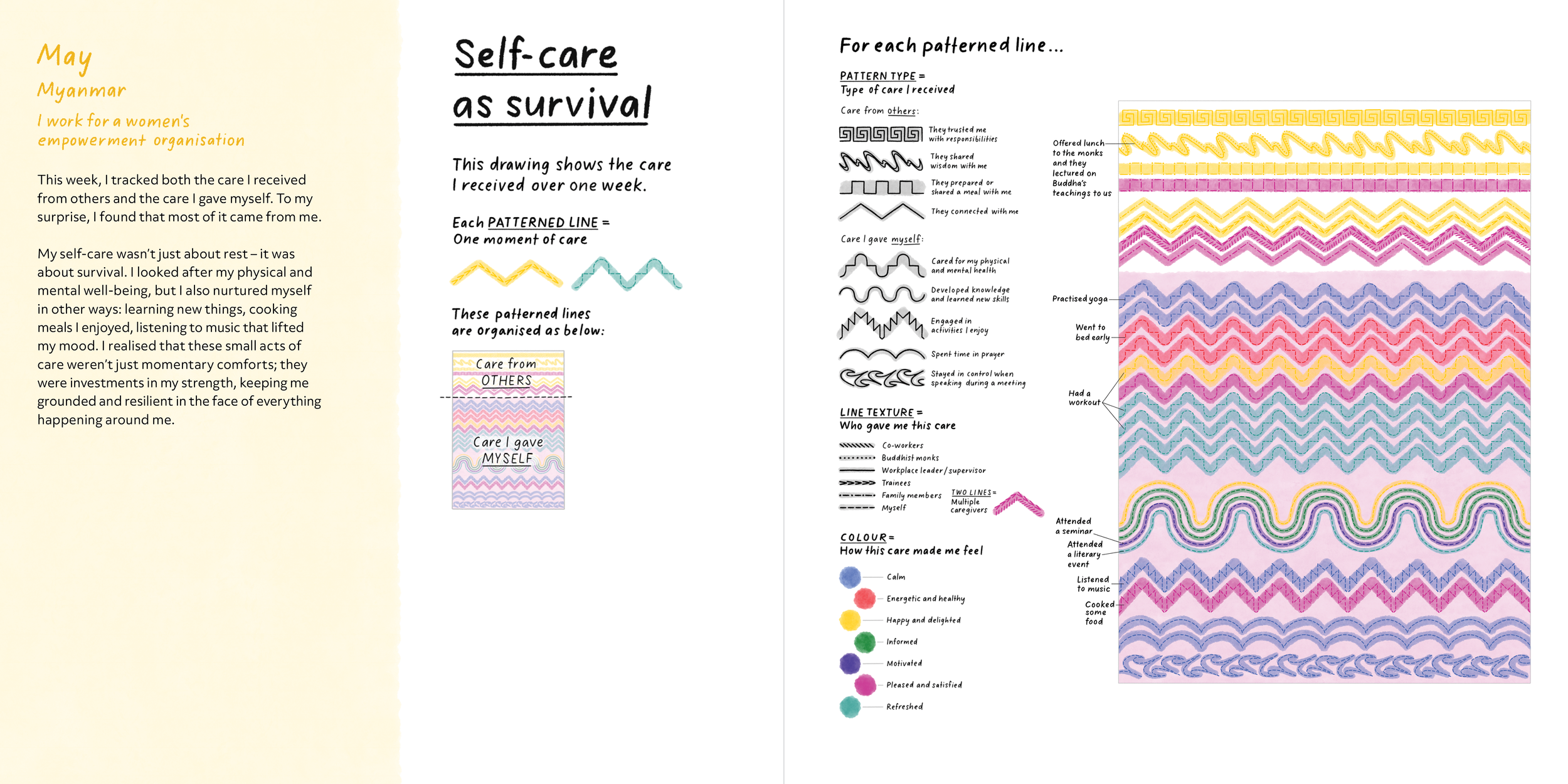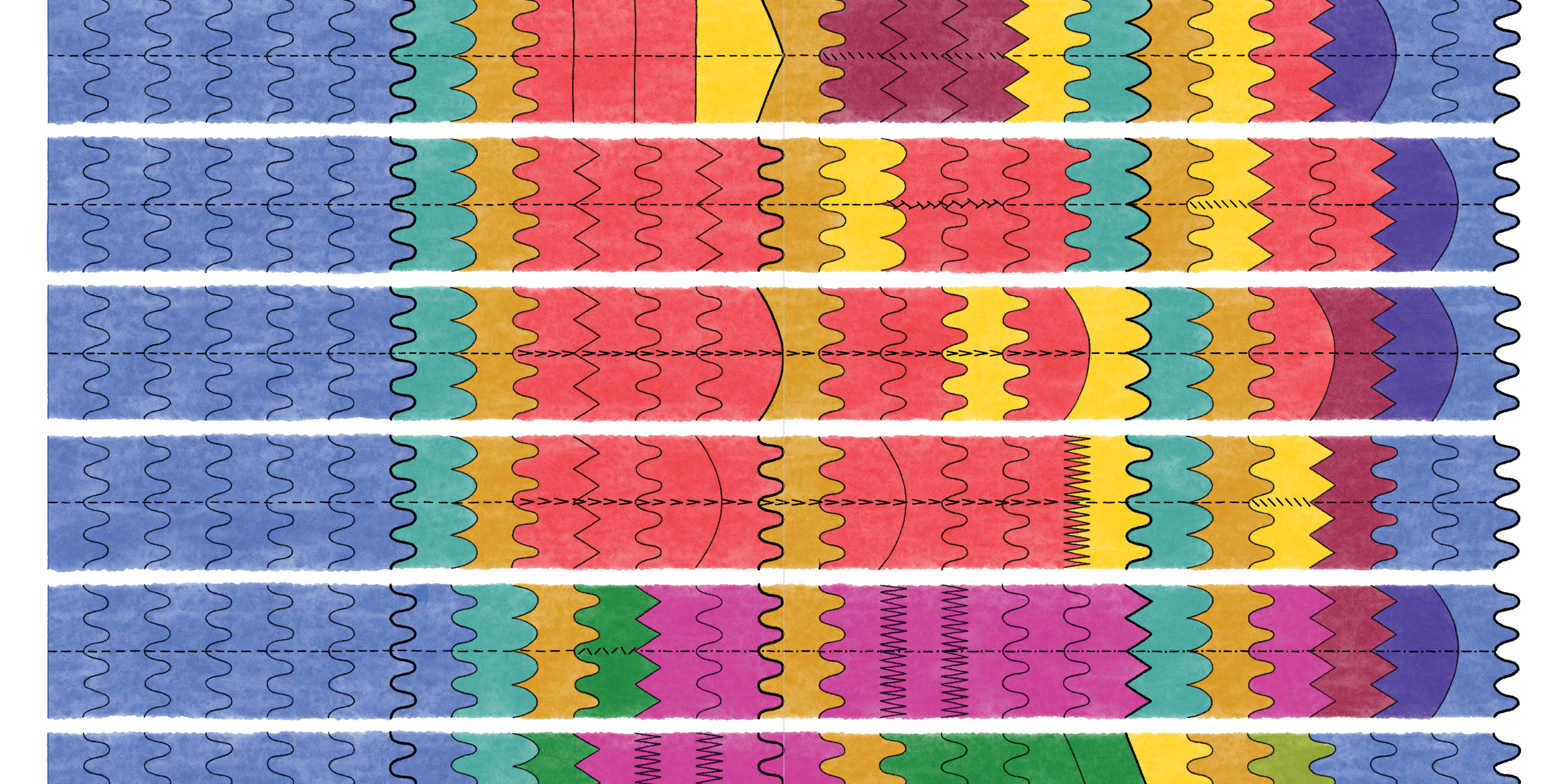Insights in Ink: Myanmar
Can personal data documentation
be used as a tool for advocacy?
The act of collecting and reflecting on data often proves more valuable to the collector than the final visualisation. But could it also amplify other people’s stories?
That question became real when I was invited to use the Dear Data format to highlight the experiences of women gender and peace activists in Myanmar.
Since a 2021 military coup, Myanmar has faced conflict, economic collapse and displacement, after decades of authoritarian rule and deep ethnic divisions. Despite this, women-led organisations continue to fight for human rights and spotlight how the crisis affects women.
Working with my collabrators, I designed workshops to teach data collection and visualisation while helping participants gather personal data to help tell their stories.
Sessions were designed with privacy and digital safety in mind. Participants used code names, kept cameras off or used avatars, and we used Signal to communicate.
To avoid retraumatisation or ‘trauma porn’, we didn’t collect conflict-related data. Instead, participants collected restorative data about their support networks, schedules, moments of care or hope, and visualised it using basic drawing materials.
At the end of the project, I asked for consent to turn the data into artworks, and eight participants agreed. I kept all datasets anonymous, and only I held the key linking the data to each participant. Of course, such a small group could never truly be anonymous, but these protections showed our commitment to privacy.
After identifying the strongest stories within the data, I began designing the final artworks.
I turned to Myanmar’s visual culture for inspiration, particularly the bold graphic patterns found in its many textile traditions. These are deeply tied to different ethnic identities, but to avoid misrepresenting anyone, I didn’t replicate specific textiles. Instead, I created a unified visual language using forms found across many Myanmar textile traditions – stripes, crosses, diamonds and more – cross-checking these motifs with Myanmar members of the project team.
Each visualisation then brought together multiple visual traditions into one design, celebrating the country’s cultural diversity.
Data visualisation felt like the right medium to share these stories. The patterns of the activists’ lives are visible, but you have to engage slowly and respectfully, offering a sense of control for women safeguarding their anonymity.
These women weren’t shown as idealised activists, but as real, imperfect, relatable people.This common ground (through data!) is where empathy begins, and why this kind of documentation is powerful for advocacy.
Myanmar textiles and their common visual motifs:
In-progress sketches:































